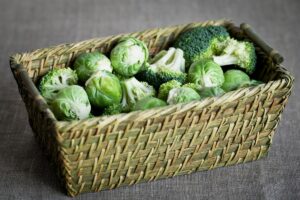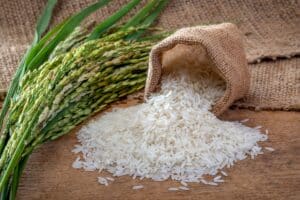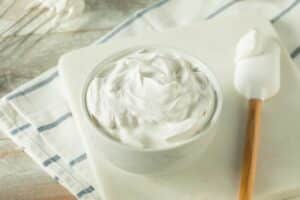Neufchatel cheese and cream cheese are often used interchangeably and as substitutes for one another. But is cream cheese the American substitute for the French Neufchatel cheese?
They do have similarities, but they also differ in a few ways, including origin, ingredients, texture, flavor, and nutritional value.
Neufchâtel Cheese vs Cream Cheese Differences
Let’s discover the fascinating details about these two varieties of cheese and see how they compare.
They Have Different Origins
Neufchâtel cheese takes its name from the hamlet of Neufchâtel-en-Bray in northern Normandy. It’s among the oldest cheeses in France and dates back to 1035.
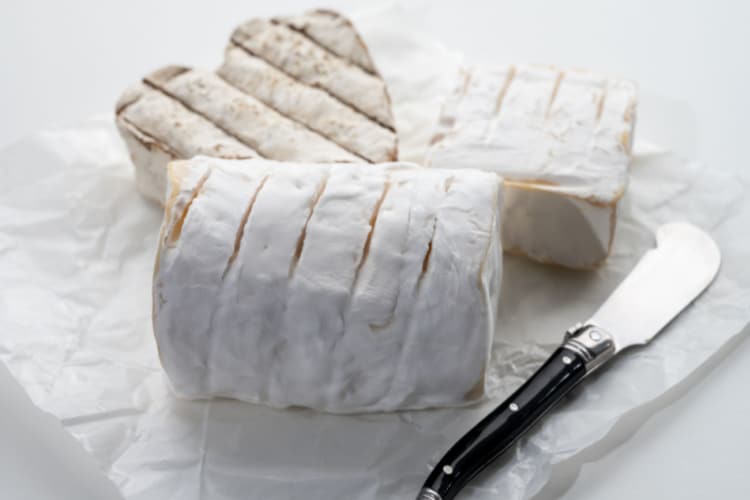
According to a legend, farm girls from Neufchâtel-en-Bray who fell in love with English soldiers during the Hundred Years War made this heart-shaped cheese as a token of their love.
Cream cheese was invented in the late 1800s in New York by a dairyman named William Lawrence. He purchased a cheese factory to make an American version of the French cheese — and he did that by adding cream into the recipe. The cheese, branded as “Philadelphia Cream Cheese,” soon gained popularity and became a kitchen staple.
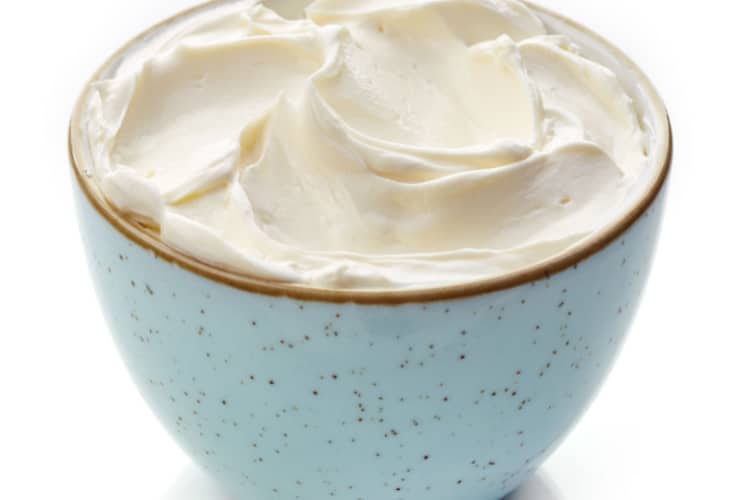
They Have Different Ingredients
French Neufchâtel cheese is made from raw cow’s milk, also known as unpasteurized cow’s milk. The cheese matures in six to eight weeks and has a delicate, edible rind when ripe.
Regular cream cheese is made with cream and pasteurized and unskimmed milk. Cream cheese also contains lactic acid to prevent crumbling and has a creamier, denser texture. It requires no time to mature but has a short shelf life once opened.
They Taste Slightly Different
Neufchatel and cream cheese are similar in flavor, but Neufchatel tastes a bit like mushrooms with hints of nuts and yeast.
The longer French Neufchâtel matures, the tangier it tastes.
Cream cheese, on the other hand, doesn’t mature, is consumed fresh, and has a sweeter taste. Typically, it’s seasoned with black pepper, different fruits, herbs, and garlic.
They Are Used in Different Ways
Both kinds of cheese are enjoyed in a similar way since they have flavor and texture that is quite comparable. The main difference is that cream cheese can be used as an ingredient for desserts like cheesecake or as a thickening agent for sauces and soups.
Thanks to their creamy textures, both are excellent toppings for puff pastry, crackers, polenta cakes, bagels, and toast.
Cream Cheese vs Neufchâtel Comparison Table
| Key Differences | Neufchâtel Cheese | Cream Cheese |
|---|---|---|
| Origin | Neufchâtel-en-Bray, France | New York City, USA |
| Ingredients | Raw cow’s milk | Pasteurized milk and cream |
| Production | Matures for 6 to 10 weeks | Consumed fresh |
| Texture | Soft and light | Dry and dense |
| Taste | Mushroomy and tangy | Sweet and tangy |
| Nutritional content | Fat: 23 gr Moisture: 55 — 65% Protein: 2.8 gr | Fat: 34 gr Moisture: less than 55% Protein: 2.1 gr |
| Calories per 100ml | 215 calories | 298 calories |
| Uses | As a spread | As a spread and as an ingredient in desserts, soups, and sauces |
Which One is Healthier?
Neufchatel cheese has about 19.4 g of milk fat and 215 calories. The low fat content makes the cheese a healthy option for those who want to reduce their fat intake.
Additionally, Neufchatel cheese has about 7.78 g of protein; therefore, it‘s excellent for those who want to add protein to their diets.
Compared to Neufchatel cheese, cream cheese is more caloric and has a higher fat content. It has 29.3 g of milk fat and 298 calories. Despite the substantial milk fat content, cream cheese only contains 5.23 g of protein.
Let’s look at the overall nutritional contents of these two cheeses to get a clearer perspective of their differences.
| 85 g Neufchatel Cheese | 85 g Cream Cheese |
|---|---|
| 215 calories 53.6 g water 7.78 g protein 19.4 g fat 1.24 g carbohydrate 3.05 g fiber 2.71 g sugar 99.4 mg calcium 8.5 mg magnesium 117 mg phosphorus 129 mg potassium 284 mg sodium 11.9 µg folate 205 µg vitamin A | 298 calories 44.7 g water 5.23 g protein 29.3 g fat 4.69 g carbohydrate 0 g fiber 3.2 g sugar 82.4 mg calcium 7.65 mg magnesium 91 mg phosphorus 112 mg potassium 267 mg sodium 7.65 µg folate 262 µg vitamin A |
In Conclusion
Neufchâtel is one of France’s oldest cheeses, dating back to the tenth century. It’s made with raw cow’s milk and is usually shaped like a heart.
Cream cheese was born in the United States after William Lawrence altered the recipe by swapping raw milk with pasteurized milk and adding cream.
Don’t know which one to choose? Neufchâtel is an excellent choice for individuals who want softer cheese with a richer, tangier flavor. It’s also healthier because it has less fat, fewer calories, and more protein.
On the other hand, cream cheese is for those that like a denser texture and sweeter taste. Plus, you can use it in desserts, soups, and sauces.
In either case, it’s not wrong to state that cream cheese is the American equivalent of Neufchâtel. They are easily interchangeable in most recipes, but the main distinctions, even though minor, are as obvious as day — Neufchâtel is covered in rind and has a tangier aroma and lighter texture. Cream cheese is sweeter, denser, and rind-free.
Of course, trying both is the best way to understand their differences! It’s a bit cheesy to say you shouldn’t judge a book by its cover, but in this case, the idiom holds up.

